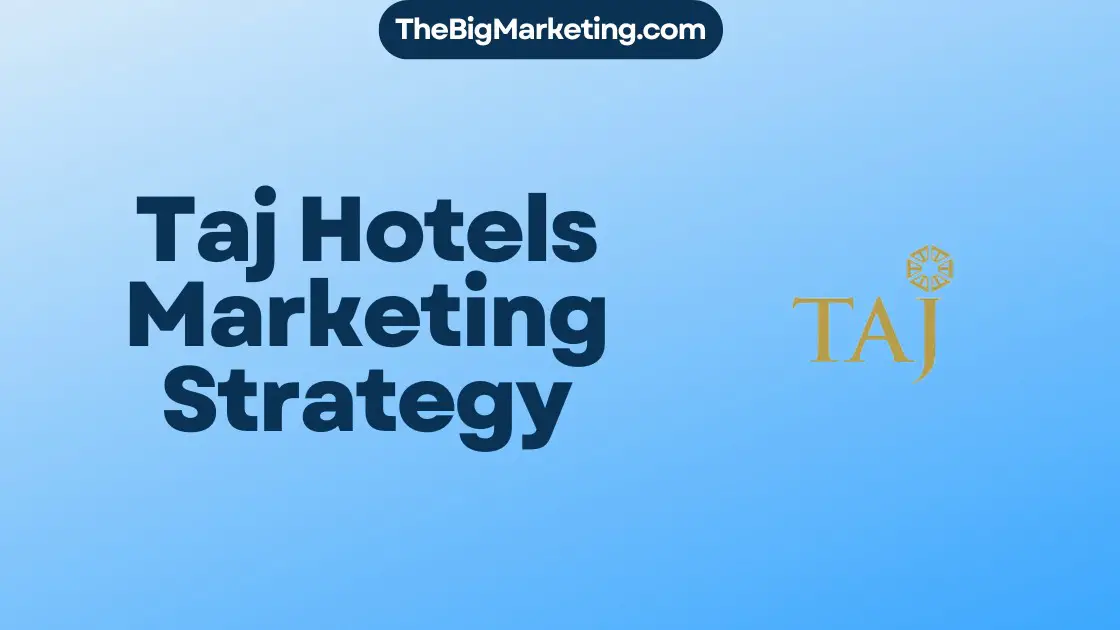Ricoh, a renowned name in the office automation industry, has developed an impressive marketing strategy for 2024. This case study highlights their innovative approach to digital marketing, brand positioning, and overall business growth. With a detailed marketing plan in place, Ricoh aims to strengthen its presence in the market and deliver exceptional value to its customers.
In today’s digital landscape, Ricoh recognizes the importance of harnessing the power of technology to reach and engage its target audience effectively. By embracing digital marketing strategies, such as social media campaigns, search engine optimization, and content marketing, Ricoh is positioning itself as an industry leader in leveraging digital platforms.
Furthermore, the marketing strategy emphasizes the significance of brand positioning. Ricoh aims to showcase its unique value proposition and create a distinct identity in the market. Through a well-defined brand positioning strategy, Ricoh aims to differentiate itself and create a lasting impression in the minds of its customers.
Central to Ricoh’s marketing plan is a comprehensive analysis of the market landscape and identification of growth opportunities. By understanding customer needs and market dynamics, Ricoh can tailor its marketing efforts to effectively target the right audience. This market analysis serves as a solid foundation for the development of their marketing plan, ensuring that Ricoh stays ahead of the curve.
Key Takeaways:
- Ricoh’s marketing strategy for 2024 focuses on digital marketing to reach and engage the target audience effectively.
- Brand positioning plays a vital role in differentiating Ricoh and creating a lasting impression in the market.
- Thorough market analysis helps Ricoh identify growth opportunities and tailor its marketing efforts accordingly.
- Ricoh’s marketing plan aims to strengthen its presence in the market and deliver exceptional value to customers.
Evolving Go-To-Market Strategy
In recent years, Ricoh has undergone a significant transformation in its go-to-market strategy, evolving from a hardware-centric company to a services-led organization. This strategic shift has opened up new opportunities for the company to expand its market presence and drive business growth.
As part of its evolving marketing strategy, Ricoh has implemented new promotion tactics that align with its focus on services. By highlighting the value and benefits of its comprehensive suite of services, Ricoh aims to attract and retain customers who are seeking holistic solutions for their business needs.
Central to Ricoh’s marketing plan is the emphasis on showcasing the unique advantages of its services, such as cost savings, increased productivity, and streamlined workflows. The goal is to position Ricoh as a trusted partner that can help businesses achieve their goals and overcome challenges in an increasingly digital and competitive market.
In addition to traditional marketing channels, Ricoh has also embraced digital marketing strategies to effectively reach its target audience. Through targeted online advertising, search engine optimization, and social media marketing, Ricoh can engage with potential customers in a more personalized and relevant way.
Expanding Market Opportunities
Ricoh’s go-to-market strategy revolves around identifying and capitalizing on emerging market opportunities. By constantly monitoring market trends and consumer preferences, Ricoh can adapt its marketing approach to stay ahead of the competition.
One example of this is the increasing demand for managed print services. As businesses look to optimize their printing infrastructure and reduce costs, Ricoh has positioned itself as a leading provider of comprehensive print management solutions. By leveraging its expertise and innovative technologies, Ricoh can effectively address the evolving needs of its target market.
Ricoh’s marketing plan also includes strategic partnerships and collaborations to further expand its reach and enhance its offerings. By joining forces with complementary businesses, Ricoh can create synergies and provide customers with a more comprehensive range of products and services.
Through its evolving go-to-market strategy, Ricoh aims to solidify its position as a market leader and build long-term relationships with its customers. By constantly adapting and innovating its marketing tactics, Ricoh can stay ahead of industry trends and deliver impactful solutions that drive business success.
Services-Centric Approach
Ricoh’s go-to-market strategy is centered around offering services that cater to the specific needs of their customers and partners. With a strong emphasis on customer-centricity, Ricoh has developed a services-centric approach to ensure they provide the best possible solutions.
One of the key components of Ricoh’s services-centric approach is their focus on designing and implementing effective advertising campaigns. Recognizing the importance of targeted marketing, Ricoh invests in creating compelling campaigns that resonate with their target audience. By understanding the unique challenges and pain points of their customers, Ricoh is able to develop advertising strategies that effectively communicate the value of their products and services.
In addition to advertising campaigns, Ricoh offers a range of marketing solutions to meet the diverse needs of their customers. These solutions are tailored to address the specific requirements of different industries and sectors. Whether it’s implementing digital marketing strategies, optimizing online presence, or developing comprehensive marketing plans, Ricoh’s marketing solutions are designed to drive results and support their customers’ success.
Advertising Campaign Example
To illustrate the effectiveness of Ricoh’s advertising campaigns, let’s take a look at their recent campaign targeting the healthcare industry. The goal of this campaign was to promote Ricoh’s healthcare solutions and position the company as a trusted provider in the healthcare sector.
Target Audience
The target audience for the campaign was healthcare providers, including hospitals, clinics, and medical practices. Ricoh’s marketing team conducted thorough market research to identify the specific pain points and challenges faced by healthcare professionals in their day-to-day operations.
Key Messages
The key messages of the campaign highlighted Ricoh’s expertise in healthcare solutions and their ability to streamline processes, improve efficiency, and enhance patient care. The messaging emphasized the importance of reliable technology and the impact it can have on healthcare organizations.
Channels
To reach the target audience effectively, Ricoh utilized a multi-channel approach for the campaign. This included digital channels such as targeted online advertisements, social media engagement, and email marketing. In addition, Ricoh leveraged industry-specific publications and partnered with healthcare conferences and events to maximize their reach.
Results
The campaign generated significant traction within the healthcare industry, with increased brand awareness and engagement from healthcare providers. Ricoh’s healthcare solutions saw a noticeable increase in inquiries and sales, as healthcare professionals recognized the value that Ricoh could bring to their organizations.
Overall, Ricoh’s services-centric approach ensures that they are not only offering products but also providing comprehensive solutions that address the unique challenges of their customers. By designing and implementing effective advertising campaigns and offering a range of marketing solutions, Ricoh is able to position itself as a trusted partner and drive growth in the market.
Market Analysis and Growth Opportunities
Ricoh’s marketing strategy incorporates a diligent market analysis process to identify lucrative growth opportunities. By thoroughly understanding market dynamics and customer needs, Ricoh can tailor their marketing efforts to effectively reach the target audience and optimize their impact. This comprehensive market analysis is a vital component in developing Ricoh’s marketing plan and ensuring their positioning in the market is strategic and effective.
Understanding Market Dynamics for Success
Ricoh recognizes the importance of staying informed about market trends and shifts in order to capitalize on growth opportunities. Their market analysis involves monitoring industry trends, competitive landscapes, and customer behavior to uncover valuable insights. By comprehensively assessing market dynamics, Ricoh gains a competitive edge and can make data-driven decisions to drive their marketing strategy forward.
Customer-Centric Approach
Market analysis also provides valuable insight into customer needs and preferences. By understanding their target audience at a granular level, Ricoh can tailor their marketing messages and solutions to meet their customers’ expectations. This customer-centric approach ensures that Ricoh’s marketing efforts are relevant, resonating with their target market and driving customer engagement and loyalty.
Identifying Growth Opportunities
Through their market analysis, Ricoh identifies growth opportunities that align with their overall marketing strategy. This includes identifying untapped market segments, expanding into new geographical locations, and leveraging emerging technologies or industry trends. By proactively seeking out growth opportunities, Ricoh can position themselves as leaders in the market and drive business growth.
Informing the Marketing Plan
The findings from Ricoh’s market analysis directly inform the development of their marketing plan. By incorporating market insights, Ricoh can refine their marketing objectives, strategies, and tactics to ensure alignment with market trends and customer needs. The marketing plan serves as a roadmap that guides their marketing efforts and helps them achieve their business goals.
Optimizing Market Positioning
Market analysis also plays a crucial role in positioning Ricoh effectively in the market. By understanding their competitors’ strengths and weaknesses, as well as market trends, Ricoh can differentiate themselves and highlight their unique value proposition. This ensures that Ricoh’s marketing messages and branding resonate with their target audience, helping to solidify their position as leaders in the industry.
Digital Transformation and the Digital Workplace
As part of Ricoh’s marketing strategy, they are fully embracing digital transformation to create a digital workplace that caters to the needs of their customers and partners. The goal is to empower users to work smarter, faster, and more efficiently by leveraging digital technologies and solutions.
Ricoh understands the importance of digital marketing in reaching and engaging their target audience effectively. Through strategic digital campaigns, they can increase brand awareness, drive website traffic, and generate quality leads. By leveraging various digital marketing channels such as social media, search engine optimization, and content marketing, Ricoh can capture the attention of their target audience and deliver personalized messaging and solutions.
The Benefits of Digital Transformation
Digital transformation offers numerous benefits for both Ricoh and their customers. By adopting digital technologies and solutions, Ricoh can streamline internal processes, improve operational efficiency, and enhance overall productivity. For customers, a digital workplace enables seamless collaboration, remote working capabilities, and access to essential resources and information from anywhere, at any time.
Moreover, digital transformation provides the opportunity for Ricoh to gather valuable customer data and insights. This data can be analyzed and utilized to develop personalized marketing strategies, tailor products and services to meet specific customer needs, and create a seamless customer experience across multiple touchpoints.
Example of a digital transformation journey:
| Stage | Description |
|---|---|
| 1. Assessing Current State | Evaluating existing digital capabilities, identifying gaps, and understanding customer pain points. |
| 2. Defining Objectives | Setting clear goals and objectives for digital transformation, aligning them with the overall marketing strategy. |
| 3. Implementing Digital Tools and Solutions | Deploying the necessary digital tools, technologies, and platforms to enable the digital workplace and digital marketing initiatives. |
| 4. Training and Adoption | Providing training and support to employees to ensure the successful adoption of digital solutions and a smooth transition to the digital workplace. |
| 5. Continuous Improvement | Regularly evaluating the effectiveness of digital transformation initiatives, making necessary adjustments, and continuously improving the digital workplace environment. |
By embracing digital transformation and creating a digital workplace, Ricoh is positioning themselves as a leader in the industry. This strategic move allows them to cater to the evolving needs of their customers while staying ahead of the competition in the rapidly changing digital landscape.
Customizable Web Storefronts and Campaign Management
Ricoh’s marketing strategy incorporates customizable web storefronts for clients, which are supported by robust campaign management capabilities. These web storefronts provide a personalized experience for customers and enable effective campaign execution.
With customizable web storefronts, Ricoh empowers clients to tailor their online presence to their specific branding and marketing needs. The storefronts can be easily customized to reflect the client’s unique brand identity, ensuring consistency across all marketing channels.
The campaign management capabilities integrated into the web storefronts streamline the execution and tracking of marketing campaigns. From designing and deploying email campaigns to managing social media ads, clients can efficiently oversee their campaigns from a centralized platform.
The use of variable data printing enhances targeted marketing efforts by allowing personalized content to be incorporated into printed materials. This strategy enables Ricoh’s clients to deliver highly relevant and engaging marketing materials to their target audience, resulting in increased conversions and customer engagement.
In addition, the implementation of digital asset management solutions ensures seamless access to and management of marketing resources. Clients can easily store and organize digital assets, such as images and videos, ensuring quick and efficient retrieval for marketing campaigns.
Overall, the integration of customizable web storefronts and campaign management capabilities in Ricoh’s marketing strategy enhances brand presence, enables effective campaign execution, and maximizes the impact of marketing efforts.
Service Contract and Support
To ensure a smooth implementation of their marketing strategy, Ricoh provides a service contract that includes support visits with a two-hour window. This commitment to customer support helps avoid any disruptions and ensures that marketing activities can proceed without delays. It is an essential component of their overall marketing plan.
Ricoh understands the importance of providing exceptional support to their customers throughout the implementation of their marketing strategy. With their service contract, they guarantee support visits within a two-hour window, ensuring that any issues or concerns can be addressed promptly. This level of commitment allows for smooth and uninterrupted marketing activities, maximizing the effectiveness of their marketing plan.
By including support as an integral part of their marketing strategy, Ricoh demonstrates a customer-centric approach and a dedication to ensuring customer success. The service contract serves as a safety net, providing peace of mind to their customers and allowing them to focus on executing their marketing initiatives with confidence.
The support visits included in the service contract provide an opportunity for Ricoh’s team to assess the effectiveness of the marketing plan and address any challenges that may arise. Through these visits, they can gather valuable feedback and make necessary adjustments to their strategies, further optimizing their marketing efforts.
The Benefits of Ricoh’s Service Contract and Support:
- Timely resolution of issues: With a two-hour window for support visits, Ricoh ensures that any problems or concerns are promptly addressed, minimizing any disruptions to marketing activities.
- Enhanced customer satisfaction: The inclusion of support visits in the service contract demonstrates Ricoh’s commitment to delivering exceptional customer service, leading to increased satisfaction and loyalty.
- Optimized marketing strategies: Through support visits, Ricoh can evaluate the effectiveness of their marketing plan and make necessary adjustments to maximize results.
- Streamlined execution: With dedicated support, customers can focus on executing their marketing initiatives without worrying about technical issues or obstacles.
- Continuous improvement: The service contract allows Ricoh to gather valuable feedback and insights, enabling them to continuously improve their marketing strategies and deliver better results.
Overall, the service contract and support provided by Ricoh are essential components of their marketing strategy. By prioritizing customer satisfaction and offering timely assistance, they ensure a seamless implementation and execution of their marketing plan, driving business growth and success.
| Benefits of Service Contract and Support | Description |
|---|---|
| Timely resolution of issues | Support visits within a two-hour window ensure prompt resolution of any problems or concerns that may arise during marketing activities. |
| Enhanced customer satisfaction | Providing dedicated support demonstrates Ricoh’s commitment to customer service, leading to increased satisfaction and loyalty. |
| Optimized marketing strategies | Through support visits, Ricoh can assess the effectiveness of their marketing plan and make necessary adjustments to drive better results. |
| Streamlined execution | With reliable support, customers can focus on executing their marketing initiatives without disruptions, ensuring smooth operations. |
| Continuous improvement | The service contract enables Ricoh to gather feedback and insights, facilitating continuous improvement and better marketing outcomes. |
Circular Business Models and Sustainable Practices
Ricoh understands the significance of circular business models and sustainability in their marketing strategy. They have implemented practices and initiatives that promote resource efficiency and waste reduction. This aligns with changing legislation and customer expectations regarding the entire product lifecycle. Ricoh’s commitment to sustainability is a pivotal aspect of their comprehensive marketing plan.
Resource Efficiency
Ricoh’s marketing strategy emphasizes resource efficiency as a core principle. By optimizing their operations and processes, they aim to minimize resource consumption and maximize output. This not only reduces waste but also helps them achieve their business objectives in a more sustainable manner.
Waste Reduction
In line with their circular business model, Ricoh actively works to reduce waste generation across their operations. They implement recycling programs and explore innovative ways to repurpose materials and components. By minimizing waste, Ricoh contributes to a more sustainable future and aligns with customer expectations for environmentally responsible practices.
Product Lifecycle
Ricoh recognizes the importance of considering the entire product lifecycle in their marketing strategy. They implement measures to extend the life of their products through refurbishment and remanufacturing. By adopting a circular approach, Ricoh aims to minimize the environmental impact of their products while meeting customer needs and market demands. This focus on the full lifecycle aligns with evolving legislation and regulations surrounding product sustainability.
Sustainable Partnerships
Ricoh understands that sustainable practices go beyond internal operations. They actively seek partnerships with suppliers and stakeholders who share their commitment to sustainability. This collaboration enables the implementation of sustainable practices throughout the supply chain and reinforces Ricoh’s position as a responsible corporate citizen.
The table below highlights some of the sustainable practices and initiatives incorporated into Ricoh’s marketing strategy.
| Sustainable Practices |
|---|
| Implementation of recycling programs |
| Exploration of innovative reuse methods |
| Refurbishment and remanufacturing of products |
| Partnerships with sustainable suppliers |
| Minimization of waste generation |
| Consideration of entire product lifecycle |
Remanufacturing and Resource Efficiency
As part of Ricoh’s comprehensive marketing strategy, they have implemented a remanufacturing operation that runs parallel to their traditional sales route. This strategic approach focuses on maximizing resource efficiency while ensuring the long-term viability of their business.
Remanufacturing involves the restoration of products to their original specifications, extending their lifespan and minimizing waste. This process aligns with Ricoh’s commitment to sustainability and demonstrates their dedication to circular business models.
To achieve operational efficiency and financial viability in their remanufacturing efforts, Ricoh has made substantial investments in developing robust systems and processes. These investments allow for a streamlined and cost-effective remanufacturing operation.
By remanufacturing products, Ricoh not only reduces environmental impact but also provides customers with more affordable options. This approach contributes to the overall success of Ricoh’s marketing plan by catering to cost-conscious customers who value sustainability.
Advantages of Ricoh’s Remanufacturing Strategy
The remanufacturing operation implemented by Ricoh brings several advantages to their marketing strategy:
- Reduced environmental footprint: Remanufacturing helps minimize waste, conserve resources, and reduce the need for raw materials. This aligns with Ricoh’s commitment to sustainability and demonstrates their dedication to responsible business practices.
- Cost-effectiveness: Remanufactured products allow customers to enjoy high-quality solutions at a lower cost compared to purchasing new equipment. This affordability attracts both price-sensitive customers and those who prioritize sustainability.
- Customer satisfaction: By providing remanufactured options, Ricoh caters to customers who appreciate environmentally friendly choices and want to support brands that embrace circular economy principles.
Remanufacturing Process at Ricoh
Ricoh’s remanufacturing process is a well-structured and efficient operation that includes the following steps:
- Identification and collection of used products
- Thorough inspection and evaluation of product condition
- Disassembly and cleaning of components
- Replacement of worn or damaged parts with genuine Ricoh components
- Testing and quality assurance to ensure remanufactured products meet Ricoh’s high standards
- Packaging and distribution of remanufactured products
Throughout the remanufacturing process, Ricoh maintains rigorous quality control measures to ensure that the remanufactured products perform as effectively as new ones. This commitment to quality and sustainability differentiates Ricoh from competitors and reinforces their position as a market leader.
| Advantages of Ricoh’s Remanufacturing Strategy | Key Elements of the Remanufacturing Process |
|---|---|
| Reduced environmental footprint | Identification and collection of used products |
| Cost-effectiveness | Thorough inspection and evaluation of product condition |
| Customer satisfaction | Disassembly and cleaning of components |
| Replacement of worn or damaged parts with genuine Ricoh components | |
| Testing and quality assurance | |
| Packaging and distribution of remanufactured products |
Challenges and Enabling Change
Implementing Ricoh’s marketing strategy presents a set of challenges, requiring careful consideration of economic viability and regulatory compliance. It is crucial for Ricoh to strike a balance between profitability and sustainable, circular practices to drive long-term success. Adapting to changing regulations and policies is essential to enable ongoing improvements in their marketing strategy, ensuring they meet the expectations of both customers and regulators.
Challenges in Marketing Strategy Implementation
Ricoh’s marketing strategy faces several challenges that warrant attention:
- Economic Viability: Ricoh must navigate economic fluctuations and market dynamics to maintain profitability and achieve sustainable growth.
- Regulatory Compliance: Adhering to evolving regulations related to data privacy, environmental protection, and marketing practices is crucial for Ricoh’s success and reputation.
- Competitive Landscape: The market is highly competitive, and Ricoh must continuously adapt its marketing strategy to stay ahead of competitors and capture market share.
Enabling Change for Marketing Success
To overcome these challenges, Ricoh must embrace change and foster an environment that supports ongoing improvements in their marketing strategy:
- Strategic Partnerships: Collaborating with industry leaders and partners can provide valuable insights and resources to enhance Ricoh’s marketing approach.
- Innovation and Technology: Embracing technological advancements and leveraging innovative marketing tools and platforms enables Ricoh to reach and engage their target audience effectively.
- Continuous Learning: Investing in employee training and development ensures that Ricoh’s marketing team stays up-to-date with the latest industry trends and best practices.
- Customer-Centric Approach: Understanding and meeting customer needs is crucial for the success of Ricoh’s marketing strategy. Collecting feedback and conducting market research helps Ricoh tailor their marketing efforts effectively.
To illustrate the challenges and enabling change, here is a visual representation of the factors influencing Ricoh’s marketing strategy implementation:
| Challenges | Enabling Change |
|---|---|
| Economic Viability | Strategic Partnerships |
| Regulatory Compliance | Innovation and Technology |
| Competitive Landscape | Continuous Learning |
| Customer-Centric Approach |
As depicted in the table, addressing challenges through enabling change allows Ricoh to mitigate risks and capitalize on opportunities, ultimately driving the success of their marketing strategy.
Leadership and Commercial Viability
Ricoh’s leadership plays a crucial role in driving their marketing strategy and ensuring commercial viability. With a strong presence in the office automation industry, Ricoh has established itself as a global leader. Their commitment to innovation and continuous evolution of their business models allows them to stay ahead of the curve and adapt to changing market dynamics.
The marketing plan developed by Ricoh focuses not only on achieving operational efficiency but also on maintaining financial viability. This comprehensive approach ensures that the company is well-positioned for long-term success by effectively balancing growth opportunities with sustainability.
By harnessing the power of technology and embracing digital transformation, Ricoh can optimize its marketing efforts and effectively reach its target audience. This enables the company to drive business growth while staying true to its core values and commitment to customer satisfaction.
Utilizing Data-Driven Decision Making
Ricoh’s marketing strategy is grounded in data-driven decision making. By analyzing market trends and consumer behavior, the company can identify opportunities and challenges to inform its marketing approach. This data-driven approach ensures that Ricoh’s marketing initiatives align with customer needs and expectations while also maximizing return on investment.
Moreover, Ricoh’s leadership understands the importance of leveraging customer insights to drive marketing effectiveness. By listening to customer feedback and monitoring market dynamics, Ricoh can continuously refine its marketing strategy to stay competitive and meet evolving customer demands.
Fostering Collaboration and Cross-Functional Alignment
Ricoh’s marketing strategy emphasizes collaboration and cross-functional alignment to ensure the success of its initiatives. By fostering strong partnerships between marketing teams and other departments within the organization, Ricoh can leverage diverse perspectives and expertise.
This collaborative approach enables Ricoh to develop cohesive marketing campaigns that align with the company’s overall business objectives. By integrating marketing efforts with product development, sales, and customer service, Ricoh can create a unified customer experience that drives brand loyalty and competitive advantage.
| Key Benefits of Ricoh’s Marketing Strategy |
|---|
| Enhanced brand positioning and recognition |
| Improved customer engagement and satisfaction |
| Maximized return on marketing investment |
| Optimized cross-functional collaboration and alignment |
| Increased market share and revenue growth |
Conclusion
With its comprehensive and innovative marketing strategy, Ricoh aims to establish itself as a leader in the market and drive business growth in 2024. The company’s focus on digital transformation, sustainability, and customer-centric solutions sets it apart from competitors and positions it for success in an evolving marketing landscape.
Ricoh understands the importance of leveraging technological advancements to stay ahead of the curve. By embracing digital transformation, the company can offer customers a seamless and efficient experience. Through its marketing plan, Ricoh will continue to evolve its digital presence, ensuring it remains at the forefront of the industry.
Sustainability is another key pillar of Ricoh’s marketing strategy. By adopting circular business models and promoting resource efficiency, the company demonstrates its commitment to environmental responsibility. This not only resonates with customers who prioritize sustainable practices but also aligns with changing regulations and societal expectations.
Overall, Ricoh’s marketing strategy for 2024 is a testament to its forward-thinking approach and dedication to meeting customer needs. By focusing on digital transformation, sustainability, and customer-centric solutions, Ricoh is poised for continued growth and success in the competitive market.





